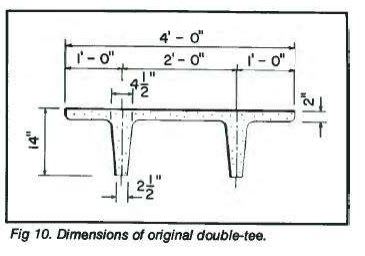johnwow
Structural
- Nov 18, 2019
- 15
I have a client who wanted me to look at a single story building that he's in contract to purchase to see if it's possible to add a second story onto part of it - office use. The original section was built in 1957. I popped up a couple of ceiling tiles and lo and behold there are double tees! Quite a surprise to me at least for a building of that age. The webs are 12" deep (from bottom of flange to bottom of web) and spaced approx. 2'-0". Looking at the history of double tees, these look to be an original design based on the dimensions and the date this was constructed.

Beyond that interesting bit of news, would it be worth my while to research further into figuring the capacity of these for office live load? My plan B to throw at him was to use the existing CMU walls that extend to a 2 to 3' tall parapet can drop open web joists & deck above the concrete if that doesn't break the deal.

Beyond that interesting bit of news, would it be worth my while to research further into figuring the capacity of these for office live load? My plan B to throw at him was to use the existing CMU walls that extend to a 2 to 3' tall parapet can drop open web joists & deck above the concrete if that doesn't break the deal.

![[idea] [idea] [idea]](/data/assets/smilies/idea.gif)